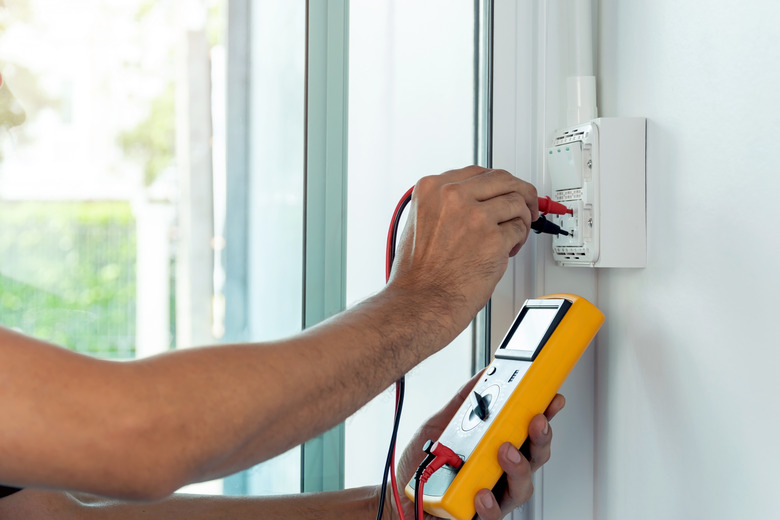How To Test A 240V Outlet
Most of the receptacles in a typical residence operate at 120 volts, and they are the ones into which you plug lamps and small appliances. In addition to these, most houses have at least one 240-volt receptacle to power larger, energy-intensive appliances like dryers, air conditioners, and stoves. If you're having trouble with an appliance plugged into one of these receptacles, the problem might be the power coming to the receptacle, and you can test the receptacle for voltage as easily as you can test a 120-volt receptacle.
This test is best performed with a multimeter. It goes without saying that the higher voltage presents a higher shock hazard, so it's important to observe safety protocols. One of the safest things you can do is to wear rubber gloves during the test procedure, and it's also prudent to wear rubber-soled shoes to prevent electric current from grounding itself through your body.
What to Expect From the Test
These days, the National Electrical Code (NEC) requires all 240-volt receptacles to be grounded, and if the receptacle you're testing conforms to code, it will have four slots. They may be angled or a combination of horizontal and vertical, but no matter what their orientation, the two outermost ones are connected to the hot wires while those between them are connected to ground and neutral wires. Neutral is usually on top, but for the purpose of the test, it doesn't matter which is which.
Receptacles installed before the NEC changed the rules aren't always grounded and have only three slots, but the wiring configuration is the same. The two outermost slots are hot, and the one in the middle is neutral. As long as you remember these configurations, the rest of the test is easy.
Testing the Receptacle Directly
You can test a 240-volt receptacle directly by inserting the multimeter probes directly into the slots. The advantage of this method is that it doesn't require turning off the power. The procedure is more or less the same for 3- and 4-slot receptacles.
Set the meter to read voltage in a range that can measure at least 240 volts. Put on rubber gloves, grasp the probes, insert one into each of the outermost slots, and check the reading. If the receptacle is live, you should get a reading of 240 volts ≠10 percent. A reading of 215 volts is acceptable as is a reading of 260 volts.
Now remove one lead and insert it in the ground or neutral slot, and you should get a reading of 120 volts ≠10 percent. Now remove the probe from the hot terminal and insert it in the other hot terminal, and you should get the same reading.
Tip
Be very careful to prevent the probes from touching each other during the test. They will create a short circuit if they touch, and besides potentially shocking you, the resulting spark can damage the outlet or the meter.
Testing for a Bad Receptacle
If you suspect a faulty outlet, you might want to check the wiring to see if it's delivering the proper voltage. To do this, first turn off the circuit breaker, unscrew the outlet, and pull it out to provide access to the wiring. Then turn the breaker back on to conduct the test.
Touch the probes to the two brass terminals to which the red and black wires are connected. The meter should read 240 volts. Now touch one probe to either of the hot terminals and the other one to ground or neutral and verify a 120-volt reading. Test the other hot terminal against ground or neutral in the same way. If you get the readings you're supposed to get and the receptacle isn't working, it's defective and needs to be replaced.
